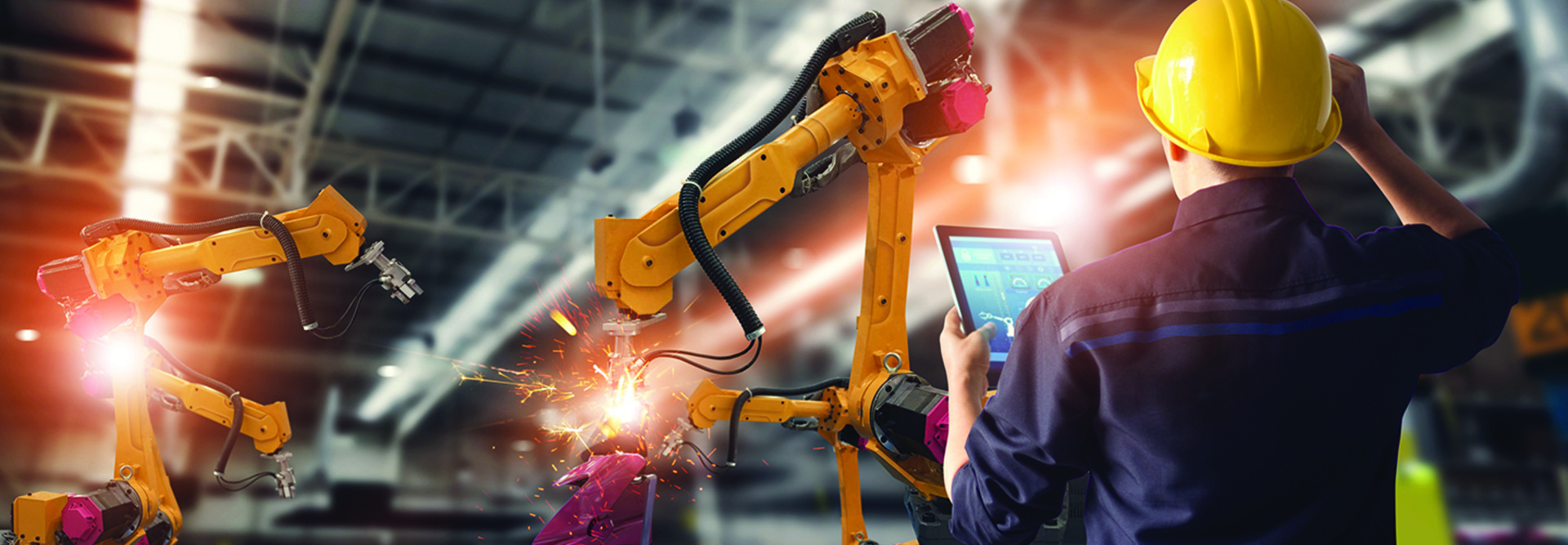What Is a Smart Factory?
Smart factories fall under the umbrella of the Fourth Industrial Revolution, also referred to as Industry 4.0. As noted by Forbes, the first iteration focused on mechanization, the second on mass production and the third on computerization. Industry 4.0, meanwhile, “will take what was started in the third with the adoption of computers and automation and enhance it with smart and autonomous systems fueled by data and machine learning.”
According to Asaf Weisberg, founder and CEO of introSight, “factories are now in transition. Back in the old days, they used PLC controllers — dumb computers that could do very basic things.” But little by little, he says, “there was a need to connect controls. Instruments that weren’t meant to be connected were connected for greater efficiency. Industry 4.0 brings more intelligence to the end device by allowing you to communicate directly.”
Smart factories are designed to drive the adoption of digital initiatives by prioritizing connection and communication between devices over the discrete manufacturing processes of previous generations. For Weisberg, deploying these connected digital technologies at scale “offers value in productivity, delivery, reduced labor and energy costs, in addition to streamlining the build-to-order cycle.”
What Is the Industrial Internet of Things?
To effectively design and deliver smart factory solutions, manufacturing firms must rely on the Industrial Internet of Things (IIoT). According to ZDNet, the IIoT “refers to the billions of industrial devices — anything from the machines in a factory to the engines inside an airplane — that are filled with sensors, connected to wireless networks and gathering and sharing data.”
Weisberg compares the Industry 4.0 approach to that of conventional industrial control systems.
“Traditional ICS has levels — actuators, sensors, etc. — that are very dumb devices,” he says. “They’re controlled by PLCs, which have some of their own logic, and are directly connected to a SCADA system.”
IIoT devices, meanwhile, exist along the spectrum between “dumb” sensors and full-fledged computers. “An IIoT device is not a computer,” says Weisberg, “but it can do basic functions and has connectivity. They’re smart objects that enable real-time action and analysis to optimize production value.”
MORE FROM BIZTECH: How analytics can power the modern utility.
The Industrial Internet of Things vs. the Internet of Things
Developing the necessary infrastructure for smart factories means using the right technology for the job. As a result, it’s worth differentiating between the Industrial Internet of Things (IIoT) and its consumer counterpart, the Internet of Things (IoT).
While the two are conceptually similar, they differ across three key areas:
- Purpose: According to Weisberg, IIoT devices are purpose-built. He highlights the IoT example of a connected smartphone/wireless earbud combination; while the earbuds serve a singular purpose, the smartphone is effectively a multiuse computer. IIoT devices, meanwhile, are designed to carry out a single, specific function and then relay collected data.
- Precision: There’s also a need for greater precision in IIoT devices, both in data collection and construction. For example, even minor temperature fluctuations could indicate a production line problem, making precision measurement critical. In addition, IIoT devices must be built to withstand the often demanding environmental conditions of fully operational factories.
- Protection: IIoT devices must operate in a protected network environment. While IoT devices may rely on public clouds to transmit and store data, the sensitive nature of factory data means they require more robust network defense.











